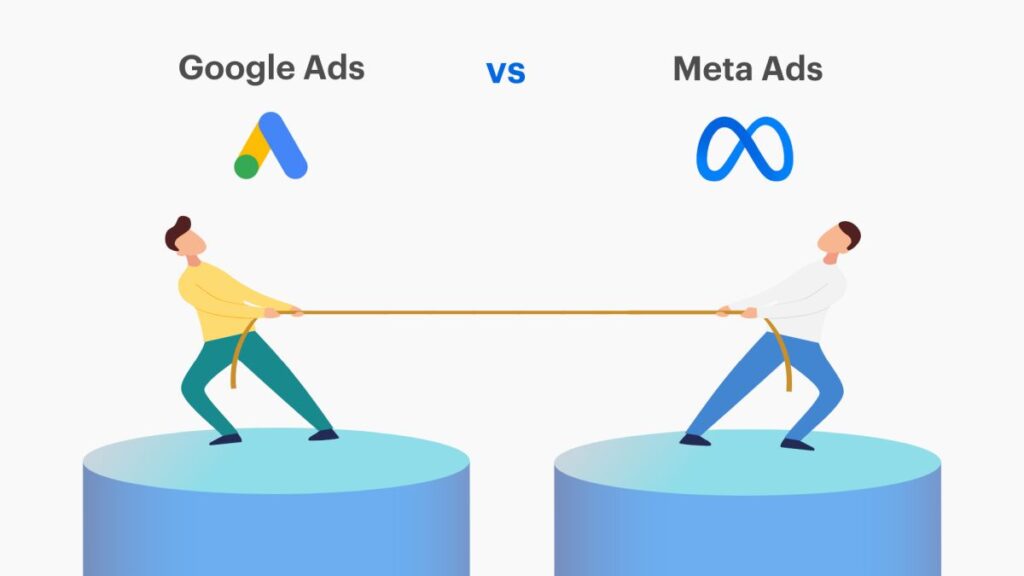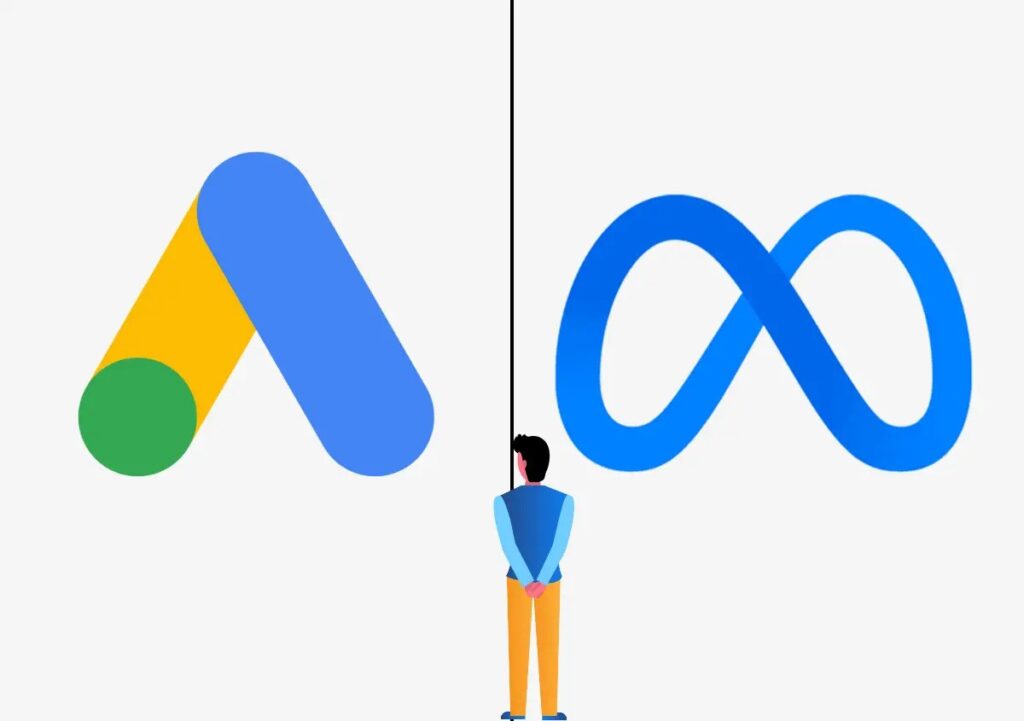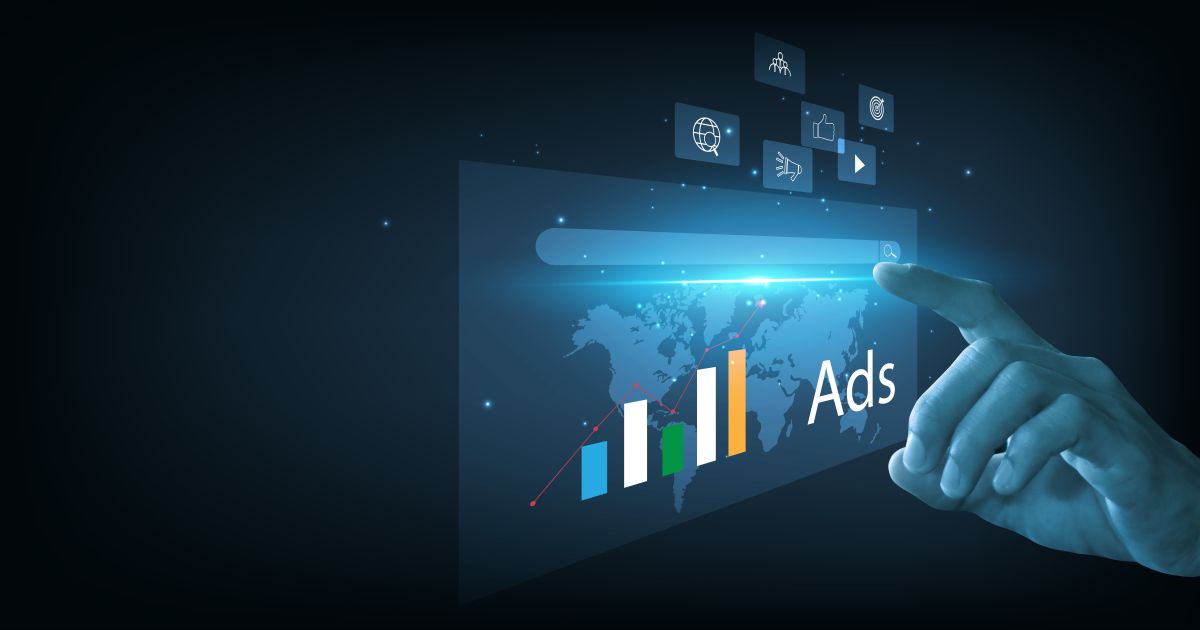Meta Ads and Google Ads belong to the number of the most powerful platforms that can be used to drive business growth through Pay-Per-Click (PPC) advertising. These two platforms have their benefits, and the selection process to align with each one used in carrying out marketing should rely on the amount of money that is going to be spent, such as the objective of the business, the target audience, and the type of advertisement that is going to be issued. This blog will summarize the similarities and contrasts between Meta Ads and Google Ads so that you can make an intelligent decision on which to use in your next PPC campaign.
Understanding Google Ads
Google Ads will enable your company to dominate the broad Google network that covers its search engine output, websites, YouTube, and mobile applications.
Key Features of Google Ads:
- Search Network: The ads appear as texts at the top of the Google search result pages. It would be ideal to seek active users who are interested in your products or services.
- Display Network: It advertises more than two million web pages and reaches more than 90 percent of the internet world. It is applicable in terms of creating brand awareness and retargeting campaigns.
- Shopping and Video Ads: It works best to tell a visual story or present products directly on the search or on video platforms such as YouTube.
When there is already a pre-existent purchase intent, Google Ads will be more effective at capturing such users and will bring a greater immediate ROI, based on a specific keyword targeting campaign.
Understanding Meta Ads
By using strong social media features, such as Facebook, Instagram, Messenger, and WhatsApp, Meta Ads provides businesses with an opportunity to attract and communicate with huge numbers of diverse audiences.
Key Features of Meta Ads:
- Facebook and Instagram Feeds: Highly visual ads for reaching broad demographics, fostering engagement, and building brand awareness.
- Stories and Reels: Vertical full-screen ads that reach young audiences, perfect to highlight more creative campaigns that create engagement.
- Messenger and WhatsApp: Advertisements are placed in messaging platforms to establish individual connections, develop a relationship with the customers, and improve direct customer contact.
Meta Ads thrives because it triggers a demand and generates an interest, making it more than suitable for businesses interested in increasing brand visibility, engagement, and lead generation.

Comparison Table: Google Ads vs. Meta Ads
| Features | Google Ads | Meta Ads |
| Main Objective | Capturing existing demand | Generating and nurturing demand |
| Ad Placements | Search, Display Network, YouTube, Google Maps | Facebook, Instagram, Messenger, WhatsApp |
| Targeting Options | Keyword-driven, intent-based | Demographics, interests, behaviors, and lookalikes |
| Ad Formats | Text, shopping, display, video | Images, videos, stories, Carousels, messaging ads |
| Audience Intent | High intent (ready to buy/searching) | Low to medium intent (awareness/interest building) |
| Cost-effectiveness | High immediate ROI | Long-term brand engagement and growth |
Choosing Based on Campaign Goals
As you determine which is better, Meta Ads or Google Ads, clarify the purpose of your campaign:
- Sales and Leads: Google Ads has better targeting options to help the business capture the instant demand, and it is considered much better for sales and lead generation than Meta Ads. In case you are interested in quick transactions, conversions, and sales, Google Ads is the preferred program.
- Brand Awareness and Engagement: Meta Ads use striking and interactive ad types, which makes them perfect when it comes to a broader audience, customer care, and brand exposure.
An example here is an online jewelry store that specializes in selling engagement rings; then the targeted search campaigns on Google Ads can be of great use, as customers would crucially search for such products specifically. At the same time, new fashion brands that want to increase brand awareness may stick to more visually-saturated Meta Ads on Instagram and Facebook.

Budget Considerations
Another essential factor that helps in decision-making between Meta Ads and Google Ads is budget allocation:
- Google Ads: It usually demands a high Cost-Per-Click (CPC), yet provides narrow-tailored, purchase-introduced markets and is suitable with temporary restrictions.
- Meta Ads: Cheaper CPC, especially on a long-term basis, to reach out to greater and more diversified audiences at relatively low costs, primarily emphasizing building brands.
Ultimately, it is common to find that usage of both platforms may give the best trading experience, whereby an equal mix of both platforms can ensure that immediate demand is tapped with Google Ads, while brand presence and brand loyalty are slowly created through Meta Ads.
Conclusion
The comparisons between Meta Ads and Google Ads should depend on how you intend to implement your marketing goals, your audience group attributes, and your budget allocations. Google Ads is probably the most capable of handling your needs in case you are interested in quick returns and you know your service or product well. Conversely, in case you are planning to develop a long-term relationship with your customers and increase brand recognition, Meta Ads would prove to be more effective.
Weigh your objectives, A/B test platforms, and measure outcomes and adapt. By putting in some thought process, you can make the most out of your online marketing campaign.
Need Help with Your PPC Campaigns?
Our team of qualified digital marketing professionals at Proteus Technologies will address your advertisement solutions by developing tailor-suited advertisement schemes according to your business requirements. Contact Proteus Technologies at [email protected] to find out how we can also increase your business performance through the use of well-targeted PPC advertising.





